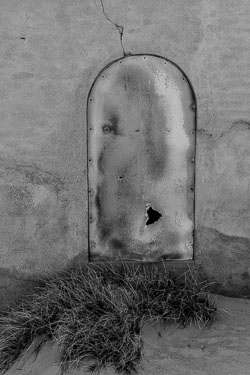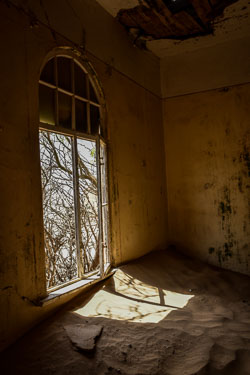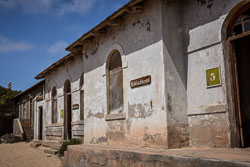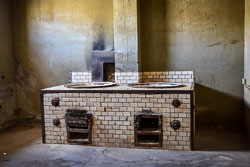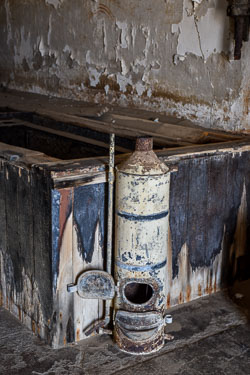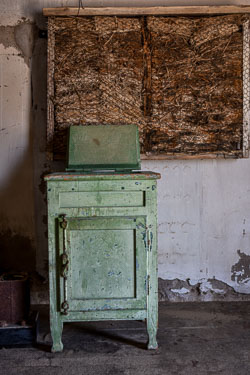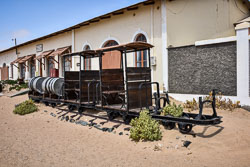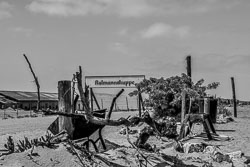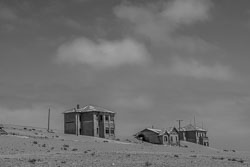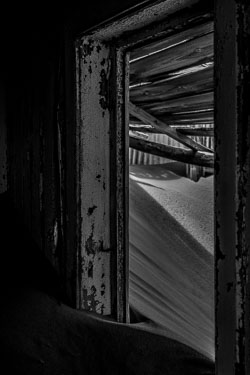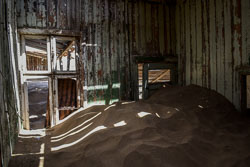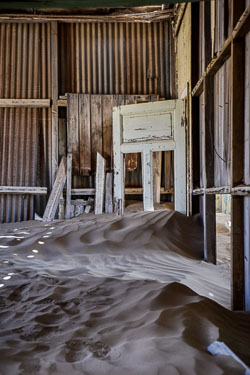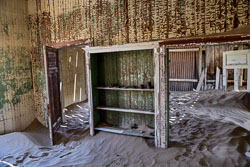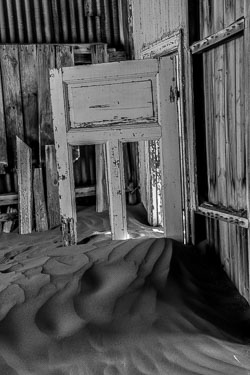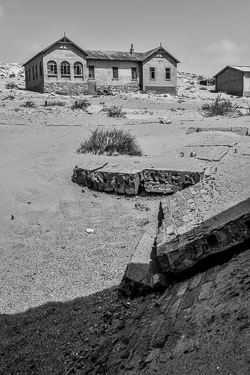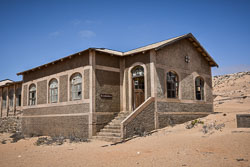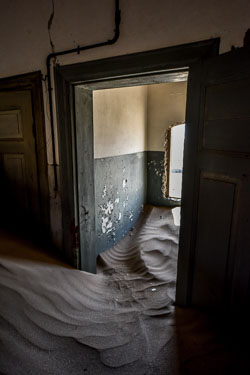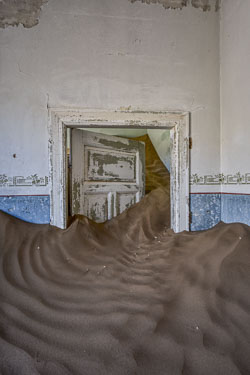2016 Kolmanskop (Namibië)
Kolmanskop (Afrikaans for Coleman's head, German: Kolmannskuppe) is a ghost town in the Namib in southern Namibia, 10 kilometres inland from the port town of Lüderitz. It was named after a transport driver named Johnny Coleman who, during a sand storm, abandoned his ox wagon on a small incline opposite the settlement. Once a small but very rich mining village, it is now a tourist destination run by the joint firm Namibia-De Beers. In 1908, the worker Zacharias Lewala found a diamond while working in this area and showed it to his supervisor, the German railway inspector August Stauch. Realizing the area was rich in diamonds, German miners began settlement, and soon after the German Empire declared a large area as a "Sperrgebiet", starting to exploit the diamond field. Driven by the enormous wealth of the first diamond miners, the residents built the village in the architectural style of a German town, with amenities and institutions including a hospital, ballroom, power station, school, skittle-alley, theatre and sport-hall, casino, ice factory and the first x-ray-station in the southern hemisphere, as well as the first tram in Africa. It had a railway link to Lüderitz. The town started to decline after World War II when the diamond-field slowly started to deplete. By the early 50s, the area was in decline. Hastening the town’s demise was the discovery in 1928 of the richest diamond-bearing deposits ever known. These were on the beach terraces 270 km south of Kolmanskop, near the Orange River. Many of the town’s inhabitants joined the rush to the south, leaving their homes and possessions behind. The new diamond find merely required scouting the beaches as opposed to more difficult mining. The town was ultimately abandoned in 1956. The geological forces of the desert mean that tourists now walk through houses knee-deep in sand. Kolmanskop is popular with photographers for its settings of the desert sands' reclaiming this once-thriving town, and the arid climate preserving the traditional Edwardian architecture in the area. Due to its location within the restricted area (Sperrgebiet) of the Namib desert, tourists need a permit to enter the town.

